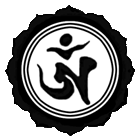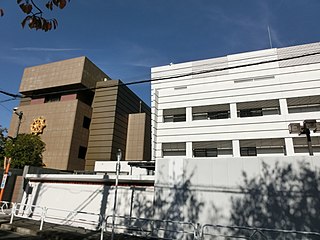 W
WJapanese new religions are new religious movements established in Japan. In Japanese, they are called shinshūkyō (新宗教) or shinkō shūkyō (新興宗教). Japanese scholars classify all religious organizations founded since the middle of the 19th century as "new religions"; thus, the term refers to a great diversity and number of organizations. Most came into being in the mid-to-late twentieth century and are influenced by much older traditional religions including Buddhism, Shinto and Hinduism. Western influences include Christianity, the Bible and the writings of Nostradamus.
 W
WAleph , formerly Aum Shinrikyo , is a Japanese doomsday cult and terrorist organization founded by Shoko Asahara in 1987. It carried out the deadly Tokyo subway sarin attack in 1995 and was found to have been responsible for the Matsumoto sarin attack the previous year.
 W
WBussho Gonenkai Kyōdan (佛所護念会教団) is an offshoot of Reiyūkai and branch of Nichiren Buddhism. It was founded in 1950 in Japan by Kaichi Sekiguchi and his wife Tomino Sekiguchi.
 W
WThe Church of World Messianity, abbreviated COWM, is a Japanese new religion founded in 1935 by Mokichi Okada. There are three pillars of the religion, of which the key concept is johrei, claimed to be a method of channeling divine light into the body of another for the purposes of healing. The Art of Nature which includes nature farming, and the Art of Beauty which includes practices such as Ikebana, a form of Japanese flower arranging, are the other formal practices. In 1926, Okada claimed to have received a divine revelation that empowered him to be a channel of God's Healing Light (johrei) to purify spiritual realm to remove the spiritual causes of illness, poverty, and strife from the world and inaugurate a new Messianic Age. He went on to teach Johrei to his followers allowing them also to achieve Messianity and spread the teachings across the world. Members are given permission to channel Johrei by wearing an O-Hikari pendant which contains a copy of one of Mokichi Okada's calligraphies. He is often referred to as "Meishu-Sama" by his followers.
 W
WThe Happiness Realization Party , abbreviated as Kōfuku, is a Japanese political party founded by Ryuho Okawa on 23 May 2009 "in order to offer the Japanese people a third option" for the elections of August 2009. The HRP is the political wing of the conservative Happy Science religious movement.
 W
WHappy Science , formerly known as The Institute for Research in Human Happiness, is a controversial new religious and spiritual movement, founded in Japan on 6 October 1986 by Ryuho Okawa, which has been characterized as a cult.
 W
WThe Honmon Butsuryū-shū (本門佛立宗) is a branch of the Honmon Hokke Shū sect. It was founded by Nagamatsu Nissen and a group of followers the 12th of January 1857 with the name of Honmon Butsuryu Ko. This group was affiliated with Honmon Hokke shu sect until the 15th of March 1947 when it became independent with the name of Honmon Butsuryū-shū. In fact, they shared the same Patriarch until 1947. The last common patriarch was Nichijun Shonin.
 W
WFuji Taiseki-ji Kenshōkai is a Japanese-based Nichiren Shoshu Buddhist lay group, affiliated with Taisekiji Head Temple since 1942 at the Myokoji Temple in Shinagawa, Tokyo and was originally called Myōshinkō .
 W
WThe Kokuchūkai is a lay-oriented Nichiren Buddhist group. It was founded by Tanaka Chigaku in 1880 as Rengekai and renamed Risshō Ankokukai (立正安国会) in 1884 before adopting its current name in 1914.
 W
WKonkōkyō , or just Konkō, is a Shintō sect, being a part of the Kyoha Shintō Rengokai, and an independent faith with origins in Shinbutsu-shūgō beliefs. Konkokyo worships primarily the spirit and energy that flows through all things as Tenchi Kane No Kami, or the Golden Kami of the Heavens and Earth.
 W
WOomoto , also known as Oomoto-kyo , is a religion founded in 1892 by Deguchi Nao (1836–1918), often categorised as a new Japanese religion originated from Shinto. The spiritual leaders of the movement have always been women within the Deguchi family; however, Deguchi Onisaburō (1871–1948) has been considered an important figure in Omoto as a seishi. Since 2001, the movement has been guided by its fifth leader, Kurenai Deguchi.
 W
WPL Kyodan, or the Church of Perfect Liberty , is a Japanese Shinshūkyō founded in 1924 by Tokuharu Miki (1871–1938), who was a priest in the Ōbaku sect of Zen Buddhism. The stated aim of the Church of Perfect Liberty is to bring about world peace.
 W
WRisshō Kōsei Kai (立正佼成会); until June 1960, 大日本立正交成会 is a Japanese new religious movement founded in 1938 by Nikkyō Niwano and Myōkō Naganuma. Risshō Kōsei Kai is organized as a lay Buddhist movement, which branched off from the older Reiyūkai, and is primarily focused around the Lotus Sutra and veneration of ancestors.
 W
WSeichō no Ie (Japanese: 生長の家, "House of Growth") is a syncretic, monotheistic, New Thought Japanese new religion that has spread since the end of World War II. It emphasizes gratitude for nature, the family, ancestors and, above all, religious faith in one universal God. Seichō no Ie is the world's largest New Thought group. By the end of 2010 it had over 1.6 million followers and 442 facilities, mostly located in Japan.
 W
WSekai Shindokyo is a Japanese new religion originated from Shinto. It was founded by Hide Aida . It is headquartered at 101 Suwa 2-chōme, Toyokawa, Aichi, Japan.
 W
WShinnyo-en is a Japanese Buddhist new religious movement in the tradition of the Daigo branch of Shingon Buddhism. It was founded in 1936 by Shinjō Itō , and his wife Tomoji in a suburb of metropolitan Tokyo, the city of Tachikawa, where its headquarters is still located.
 W
WShōroku Shintō Yamatoyama (松緑神道大和山) is a Shintō-derived religious movement headquartered in the town of Hiranai in Aomori Prefecture, Japan.
 W
WSoka Gakkai is a Japanese Buddhist religious movement based on the teachings of the 13th-century Japanese priest Nichiren as taught by its first three presidents Tsunesaburō Makiguchi, Jōsei Toda and Daisaku Ikeda. It is the largest of the Japanese new religions and claims the largest membership among Nichiren Buddhist groups. “The organization bases its teachings on Nichiren's interpretation of the Lotus Sutra and places chanting "Nam Myōhō Renge Kyō" at the center of devotional practice. The organization promotes its goals as supporting "peace, culture, and education".
 W
WSukyo Mahikari is an organization with centers in more than 100 countries. The stated aim of the organization is to help people improve the quality of their lives and attain happiness by practicing universal principles and a method of spiritual purification called the art of True Light. It was founded by Kōtama Okada in 1959 under the name L. H. Yokoshi no Tomo. Sukyo Mahikari was registered on June 23, 1978 by Keishu Okada as part of an amicable settlement following the passing of Kōtama Okada. In 2013, Sukyo Mahikari announced it had a membership of approximately one million practitioners.
 W
WTenrikyo is a Japanese new religion which is neither strictly monotheistic nor pantheistic, originating from the teachings of a 19th-century woman named Nakayama Miki, known to her followers as Oyasama. Followers of Tenrikyo believe that God of Origin, God in Truth, known by several names including "Tsukihi," "Tenri-Ō-no-Mikoto" and "Oyagamisama " revealed divine intent through Miki Nakayama as the Shrine of God and to a lesser extent the roles of the Honseki Izo Iburi and other leaders. Tenrikyo's worldly aim is to teach and promote the Joyous Life, which is cultivated through acts of charity and mindfulness called hinokishin.